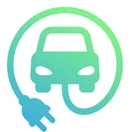Some 295,000 plugin vehicles were registered in Europe in September, rising 6% YoY, which represents the EV market’s return to growth for the first time since April. This is even more significant when you consider the overall market fell by 4%, to 1.1 million units.
Interestingly, BEVs are the ones pushing the market upwards, growing 14% YoY to 212,000 units. PHEVs remain stuck in red, falling 9% in September to 83,000 units.
Looking at the remaining powertrains, only HEVs were positive, growing 12% YoY, while petrol was down 19% and diesel continued to free fall, dropping 24%.
As such, September’s automotive market has seen some seismic changes, with plugin vehicle share of the overall European auto market rising to 26% (19% full electrics/BEVs). Added to the 34% market share of HEVs, that means that 60% of all passenger cars sold in Europe last September had some kind of electrification.
Even more importantly, for the first time, sales of HEVs (34% share) surpassed sales of petrol vehicles (29% share) in September, a trend that is surely here to stay. Meanwhile, diesel (8%) continues to lose relevance every passing day. At this pace, I wouldn’t be surprised if diesel was dead in Europe before 2030, with petrol following it a couple of years later.
These results kept the 2024 plugin vehicle share at 22% (15% for BEVs alone) through the end of September, which is only 1% less than where we were a year ago, at 23%.
Finally, looking at the sales breakdown between BEVs and PHEVs, despite the good result for pure electrics in September, they represented 72% of all plugin sales, and they are at exactly at the same level in 2024 as they were a year ago (67%). With new or refreshed models landing soon for both powertrains — namely, cheaper BEVs and longer range PHEVs — and new CO2 ceilings in Europe, it will be interesting to see how the two technologies behave next year.


